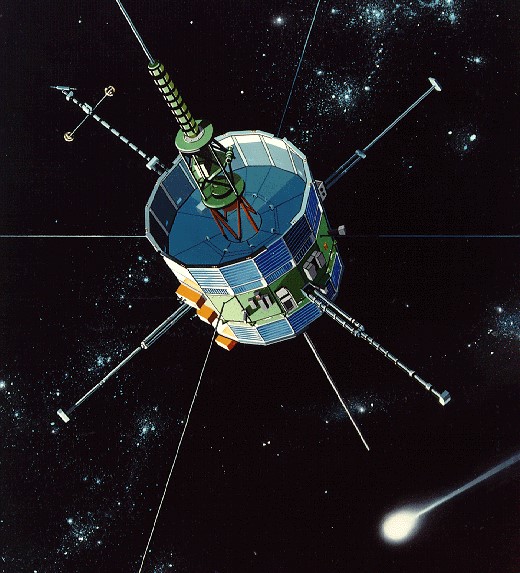ISEE-3/ICE
ISEE-3 was the third spacecraft of the NASA/ESA ISEE Program of the International Magnetospheric Study. Launched on 12 August 1978 and inserted in L1 Lagrange point, the satellite was situated at about 240 Earth radii upstream between the Earth and the Sun. So ISEE-3 could permanently observe the solar wind plasma before it arrived one hour later at the Earth to be correlatively studied by the two other spacecraft (ISEE-1 and -2) orbiting around the Earth.
ISEE-3 was stabilized by spin around its principal axis, which was maintained perpendicular to the ecliptic plane within 1 degree. It was stationed at the Lagrange point during nearly 4 years. Then after it was redirected into a series of looping trajectories, using interaction with the lunar orbit, through the deep magnetic tail of Earth to explore the magnetosphere. After 1983, ISEE3 was sent to encounter the comet Giacobini-Zinner (September 1985) and consequently renamed ICE (International Cometary Explorer Mission).
The primary goal of the ISEE program was to study the interaction of the solar wind with the Earth's magnetosphere. The role of ISEE-3 during its orbital life at the Lagrange point was to determine the properties of the oncoming solar wind before its interaction with the magnetosphere.
Access to mission data |

|
Access to mission documents |

|
